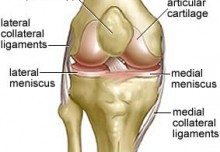 If I were to ask you what you or an older loved one had for dinner yesterday, the chances are 90+percent that the meal included foods that you or they have had before. In fact, raise your hand if it was a mom’s or dad’s recipe…or grandma’s or grandfather’s recipe. And if I were to ask about your diet for the past entire week, it’s also a pretty safe bet that many of your meals include repeat performances of the same old same old…and then there is leftovers which are the ultimate in “same old.” Yet, dieticians say one of the best things you can do for your health is mix up your fruits and vegetables.
If I were to ask you what you or an older loved one had for dinner yesterday, the chances are 90+percent that the meal included foods that you or they have had before. In fact, raise your hand if it was a mom’s or dad’s recipe…or grandma’s or grandfather’s recipe. And if I were to ask about your diet for the past entire week, it’s also a pretty safe bet that many of your meals include repeat performances of the same old same old…and then there is leftovers which are the ultimate in “same old.” Yet, dieticians say one of the best things you can do for your health is mix up your fruits and vegetables.
Here’s where you stretch yourself a bit if you follow researchers’ advice and include more than 30 plant-based foods within you week, because mixing up your plant-based foods mixes up your gut biome. Your gut biome is the composite of all the elements of your diet that continue to reside in your digestive tract and variety is not just the spice of life. It is life itself, especially as it improves your immune system and helps strengthens your bones and muscles and brain and more. There are countless plants from around the world, but here are just nine that can give you a start on upgrading your gut biome:
- Breadfruit, for instance, gives you 50% of the fiber your body needs in just a one cup serving and it’s rich in both vitamin C and potassium. Check it out as well as look for where you can get foods from the Pacific islands.
- Culantro is like the better known cilantro, but is much richer in vitamins A and C, important antioxidants. It also has lots of calcium which is good for both bones and your heart. Google “sofrito,” a very popular Caribbean dish from Dominican Republic for a recipe that include culantro.
- Taro Leaves are an abundant source of vitamins A and K to boost your blood’s health as well as bolster your immune system. It comes from dasheen bush in Trinidad and Tobago, and is the defining part of callaloo soup.
- Eddo leaves are a lot like spinach and also contain large amounts of potassium, folate and vitamins A and C. You’ll have to find where eastern South Americans shop for their produce.
- Plantains may look like bananas, but they have much less sugar. They give your body a big boost to your gut biome with healthy bacteria as well as potassium and magnesium for better cardiovascular health. It’s one of those rare foods that are good for breakfast, lunch and dinner.
- Chapulines – if you’re looking for a break from vegetarian fare – are a great source of fiber, potassium, phosphorous and protein. If you Google this one you’ll find these grasshoppers are a great part of Mexican snacks as well as a tasty part of tacos.
- Dandelion greens are closer to home and are high in A, E and K…they’re also rich in folate. Fresh leaves can be a tasty accent to salad with its high iron, magnesium and potassium and provides a great antioxidant.
- Huitlacoche is commonly called corn mushroom and is the central ingredient in what is sometimes called “Mexican truffle” or “Aztec caviar.” This mushroom/fungus can be bought canned and online is full of antioxidants and vitamin C.
- Acerola cherries could be called “super cherries,” because a half cup of these tasty fruits provides 900 percent of the vitamin C you require daily. You can access these Caribbean fruit more easily in powder form to use in smoothies.
You may have found one in this list that sounds quite enticing, but the key is to branch out from just one food and into more variety and to keep consuming more and different foods. And, yes, you can take a pass on grasshoppers.
Charlotte Bishop is an Aging Life Care Advisor, Geriatric Care Manager and founder of, certified professionals who are geriatric advocates, resources, counselors and friends to older adults and their families in metropolitan Chicago. She also is the co-author of How Do I Know You? A Caregiver’s Lifesaver for Dealing with Dementia.






